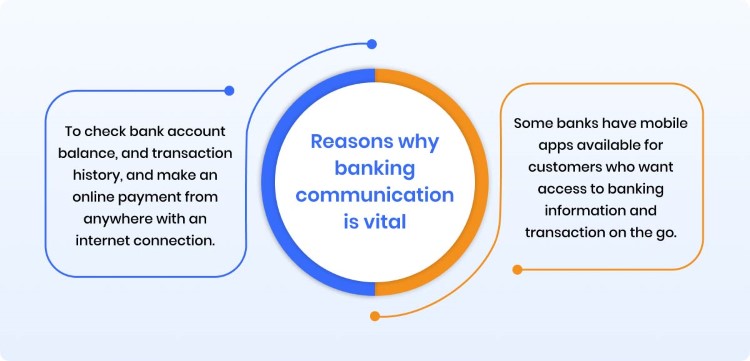When you need to contact someone at Future Bank, knowing the right email format is key.A Future Bank email can help you reach the right department or person quickly and efficiently. In this post, we’ll explore the different email formats used by Future Bank, so you can make sure your messages go to the right place.
There are several types of Future Bank email formats that employees use. The most common one includes just the first name, like jane@futurebank.com.bh. Other formats include variations with initials or full names, and understanding these will help you communicate better. Let’s take a closer look at the most popular email formats used by Future Bank employees.
What is a Future Bank Email Format?

When you need to email someone at Future Bank, it’s important to know the format of the email address. The Future Bank email format is used to ensure that messages are sent correctly to the right person or department. By understanding the format, you can reach your intended recipient faster and avoid mistakes.
The most common format for a Future Bank email is using just the first name of the person, followed by the domain, like jane@futurebank.com.bh. This format is widely used, especially for employees in various departments.
The Most Common Future Bank Email Format Explained
The most common Future Bank email format is simple and easy to remember. Employees often use only their first names for their email addresses, which is followed by the company’s domain name. For example, an email address could look like jane@futurebank.com.bh. This format is typically used by most employees, making it the easiest to use for quick communication.
Another format that you might come across is the first name followed by the last initial. For example, jane.d@futurebank.com.bh. This format is commonly used in situations where there may be several people with the same first name.
- First name only (e.g., jane@futurebank.com.bh)
- First name and last initial (e.g., jane.d@futurebank.com.bh)
- Full name (e.g., jane.doe@futurebank.com.bh)
How to Find the Right Future Bank Email for Your Needs

Sometimes, finding the right Future Bank email for the person you want to contact can be tricky. If you’re not sure about the format, there are several ways you can find the correct contact information.
First, check the company website or the email signature of other emails you’ve received. Many employees include their full contact information, including their email addresses. Another way is to reach out to the customer service team at Future Bank. They can direct you to the right person or department if you don’t know their specific email.
Tips for Sending Emails to Future Bank Employees
Sending emails to Future Bank email addresses requires a bit of care to ensure your message is professional and reaches the right person. Here are a few tips for communicating effectively:
- Always double-check the spelling of the email address. A small typo can lead your email to the wrong person.
- Use a clear and specific subject line so the recipient knows the purpose of your email right away.
- Be polite and professional in the body of your email. Even if you are sending a casual message, it’s important to remain respectful.
Subheading for H3: Email Etiquette for Professional Communication
- Be polite and clear in your subject line and message.
- Proofread your email before hitting send to avoid mistakes.
- Avoid informal language or slang in professional emails.
How to Improve Your Communication with Future Bank Email Formats

Improving your communication using the right Future Bank email format can save you a lot of time. When you know the proper format, your emails are more likely to be received and replied to quickly. This can make your work life easier and help you avoid delays.
It’s important to remember that each email format serves a different purpose. For example, using a full name ensures that you are addressing the correct person, especially if there are several employees with the same first name. If you’re unsure of the format, do a quick search on the bank’s website or contact their support team for clarification.
- Use the first name only for quick and easy communication.
- Use first and last initial for people with the same name.
- Opt for full names when you want to be very specific.
Subheading for H3: When to Use Different Future Bank Email Formats
- Use first name when reaching out to a colleague.
- Use full name for formal communication with leadership.
- Use initials to avoid confusion when there are multiple people with the same first name.
Conclusion
In conclusion, knowing the right Future Bank email format is important for quick and accurate communication. By understanding the different email formats, like using just the first name or the full name, you can make sure your emails reach the right person. Whether you’re emailing a colleague or someone in leadership, using the correct format can help you get the response you need faster.
Remember, if you’re ever unsure about the correct format, you can always check the Future Bank website or contact their customer service. Being clear and professional in your emails will help build good communication and make your experience at Future Bank much smoother.
FAQs
Q: What is the most common Future Bank email format?
A: The most common format is using just the first name, like jane@futurebank.com.bh.
Q: Can I use initials in a Future Bank email?
A: Yes, you can use the first name and last initial, like jane.d@futurebank.com.bh.
Q: How do I find the correct Future Bank email?
A: You can check the company website or ask customer support for the right email address.
Q: Why is it important to use the correct Future Bank email format?
A: Using the right format ensures your email reaches the right person and avoids confusion.Q: Can I use a full name in a Future Bank email?
A: Yes, some employees use their full name, like jane.doe@futurebank.com.bh, especially for clear communication.




